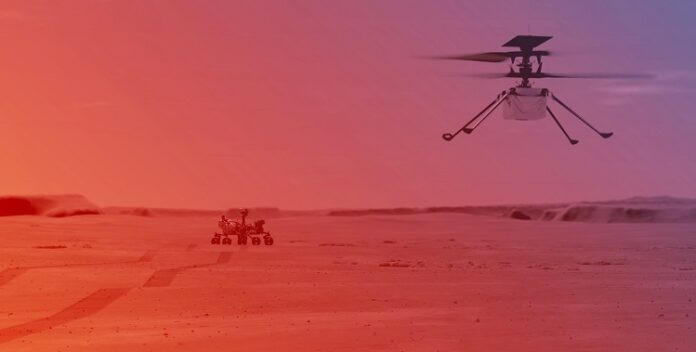| Subscribe to our YouTubeChannel |
|
|---|
Nasa will attempt to send a miniature helicopter buzzing over the surface of Mars on Monday, in a 21st-century Wright Brothers moment, in what would be the first powered, controlled flight of an aircraft on another planet.
By conventional measures, groundbreaking achievements in science and technology can appear modest. In 1903, near Kitty Hawk, North Carolina, the Wright Brothers made the first controlled flight in the world of a motor-driven aeroplane, covering only 120 feet (37 meters) in 12 seconds.
Nasa’s solar-powered, twin-rotor helicopter Ingenuity will make a low-key debut as well.
If everything goes according to plan, the 4-pound (1.8-kg) whirligig will slowly rise to a height of 10 feet (3 meters) above the Martian surface, hover for 30 seconds, then rotate before landing gently on all four legs.
The interplanetary test flight’s “air field” is located 173 million miles from Earth, on the floor of Jezero Crater, a vast Martian basin. Ingenuity’s ability to use an autonomous pilot and navigation system to carry out pre-programmed flight instructions is crucial to the mission’s success.
At a recent briefing at NASA’s Jet Propulsion Laboratory (JPL) near Los Angeles, Ingenuity project manager MiMi Aung said, “The moment our team has been waiting for is almost here.”
Nasa has compared the experiment to the 117-year-old feat of the Wright Brothers by affixing a tiny swath of wing fabric from the original Wright flyer under Ingenuity’s solar panel as a tribute to that modest but monumental first flight.
The rotorcraft was strapped to the belly of Nasa’s Mars rover Perseverance, a mobile astrobiology lab that landed in Jezero Crater on February 18 after a nearly seven-month journey through space.
Although Ingenuity’s flight test is scheduled to start at 3:30 a.m. ET on Monday (0730 GMT Monday), data confirming its success is not expected to reach JPL’s mission control until around 6:15 a.m. ET on Monday.
Nasa also anticipates receiving images and video from the flight, which mission engineers hope to capture with cameras mounted on the helicopter and the Perseverance rover, which will be parked 250 feet (76 meters) away from Ingenuity’s flight zone.
If the test is successful, Ingenuity will fly for several more weeks, though it will need to rest for four to five days between each flight to recharge its batteries. Future flights are largely dependent on a safe, four-point touchdown the first time.


















